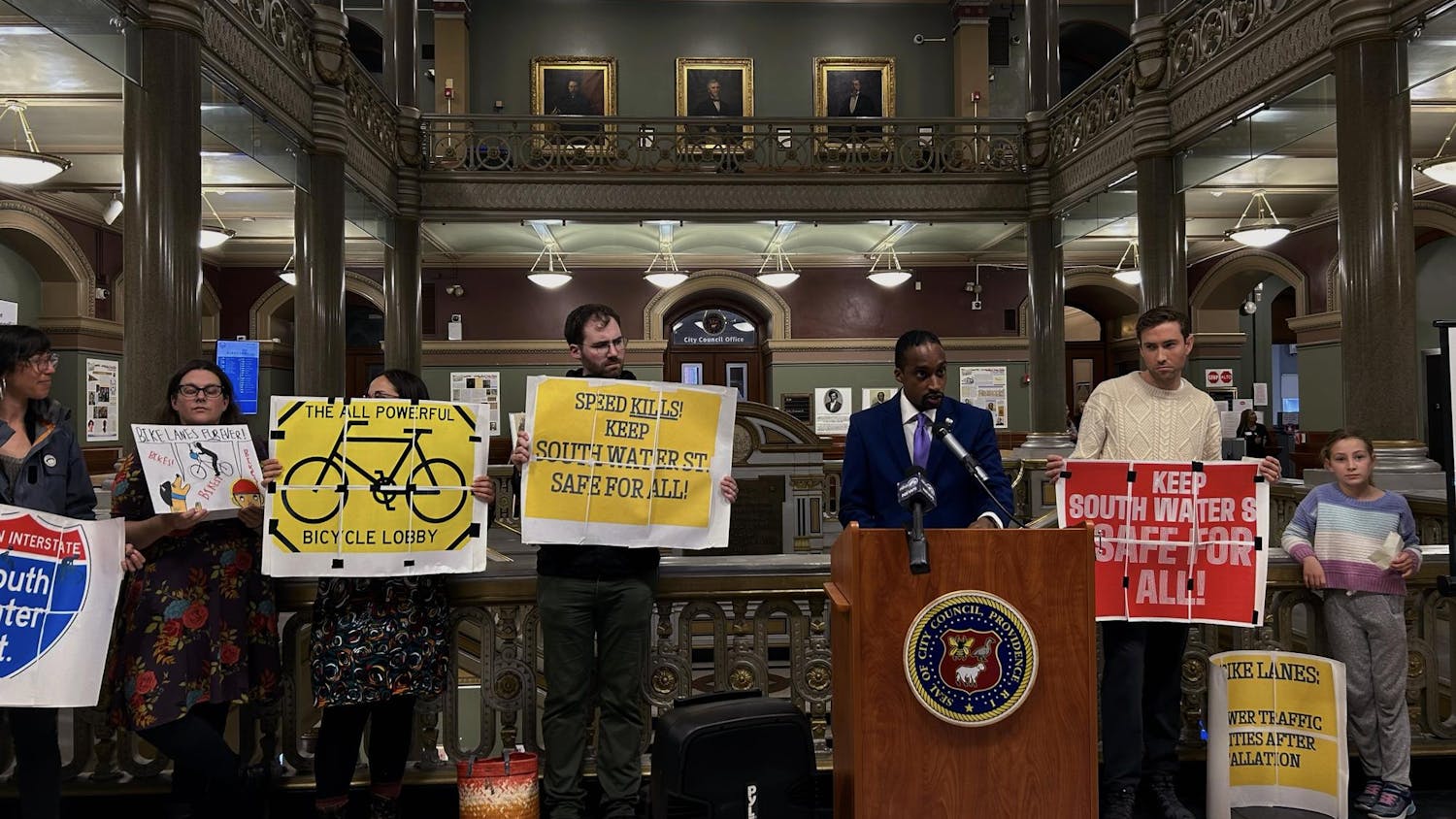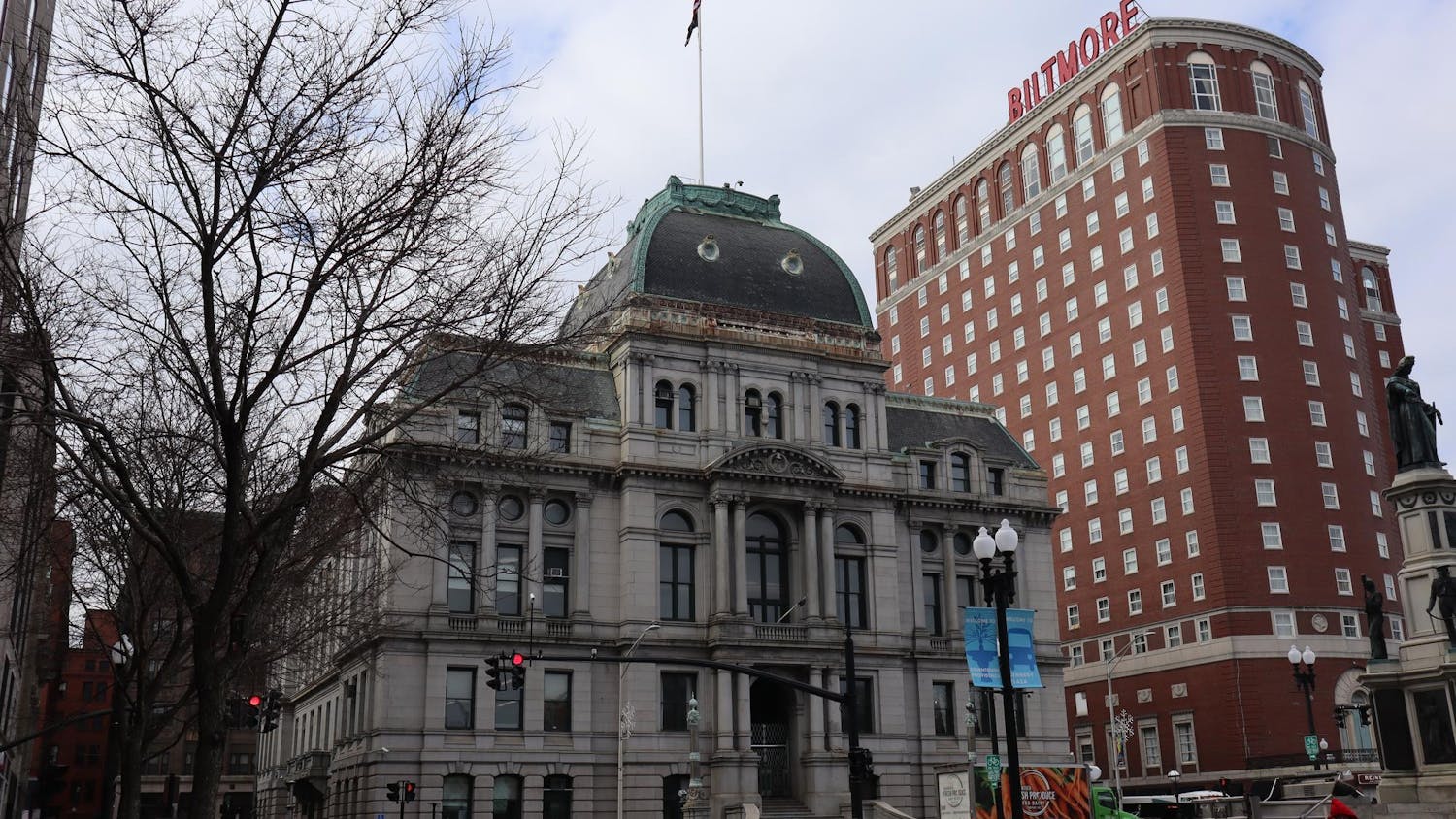Mayor Angel Taveras has gained a slight lead over General Treasurer Gina Raimondo in Rhode Island’s Democratic gubernatorial primary, according to a poll released Feb. 12.
Shedding new light on what could be a very close race for the governorship, the polls shows Taveras commands 31 percent of the 503 likely Democratic voters polled, while Raimondo was preferred by 27 percent. Clay Pell had the support of 15 percent of those polled, Todd Giroux, a perennial candidate, was backed by 1 percent and 25 percent of respondents were undecided among the four candidates.
The results of the poll, which was conducted by the consulting firm Fleming and Associates, diverge sharply from an October poll conducted by the Taubman Center for Public Policy and American Institutions. The Taubman poll showed Raimondo backed by 42 percent of voters, with 33.6 percent favoring Taveras. Taubman Center Director Marion Orr called the gap between “a substantial margin,” The Herald previously reported.
“I think it is always risky to make big generalizations,” said Wendy Schiller, associate professor of political science and public policy, referring to the discrepancies between the various polls. Instead, it is important to look at trends across polls, understanding that margins of error should also be taken into account, she added.
But “any gap between the candidates that is beyond five percent is usually pretty accurate,” Schiller said. By these standards, Taveras’ four-point lead over Raimondo indicated by the Fleming poll is within the margin of error.
“I think it is a wide-open race at this point,” said Ian Donnis, political reporter for Rhode Island Public Radio, adding that the addition of new candidates — such as Clay Pell — to the race provides more choices for voters, which “is going to divide the support in a new way.”
The launch of Clay Pell’s campaign Jan. 28 could have been an important factor in the results of the poll, which was conducted Feb. 3 - 6, Schiller said. Voters who do not find Taveras particularly appealing, but are also committed to not voting for Raimondo “now have another choice,” she said.
Pell’s name is a valuable asset in itself, given the widespread recognition of his grandfather, Claiborne Pell, who served as U.S. Senator for Rhode Island from 1961 to 1997, Schiller said.
“It looks to me like some of Taveras’ voters may have gone to Pell,” Donnis said, noting that Pell still has a lot of progress to make if he is going to compete with Taveras and Raimondo, who appear to be the race’s current frontrunners.
“He has a big challenge to overcome,” Schiller said of Pell, adding that many Rhode Island voters consider previous leadership experience to be a valuable trait, and Pell has never held public office.
But “there’s still time for (Pell’s) support to grow,” Donnis said, adding that Pell’s ability to contribute personal funds to the campaign could be a valuable advantage.
Taveras has traditionally received his strongest support from union Democrats and Latinos, while Raimondo is especially appealing to women and fiscal conservatives, Schiller said. But these groups may not remain completely loyal to their historically-preferred candidates, she said, adding that in the Sept. 9 primary, the candidates will likely “attract supporters from each other’s base.”
“A lot of division in the primary could open the door for a Republican governor,” Schiller said. Both Republican candidates, Cranston Mayor Allan Fung and Ken Block, are strong contenders, she added.
Predicting the outcome of the race between Fung and Block is complicated due to the small size of the Republican voting base, which makes it difficult to obtain a reliable sample size, Donnis said.
“Although Rhode Island is perceived as a very liberal state … we’ve seen a strong tendency among Rhode Island voters to elect Republican governors,” Donnis said. Bruce Sundlun was the last Democrat to be elected as the Ocean State’s governor in 1990. Though Gov. Lincoln Chafee ’75 P’14 P’17 registered as a Democrat in May, he was elected as an Independent.
Both Taveras and Raimondo “are trying to cater to liberal elements within the primary electorate,” Donnis said, adding that he would currently characterize the Democratic race as “a fiercely contested, wide-open primary that any of the candidates could win.”
Though 62.5 percent of Rhode Islanders polled by the Taubman Center in October indicated that the state was not headed in the right direction, Donnis said he thinks there will be a “fairly robust” turnout for both the September gubernatorial primary and the November general election. Though “there is a lot of political apathy,” and “a fair degree of cynicism” among Rhode Islanders, Donnis said voters will be eager to elect an official who can address Rhode Island’s unemployment rate — the highest in the country.
“This governors race will be a feast for political junkies,” Donnis said.

ADVERTISEMENT




